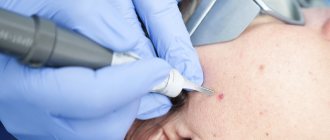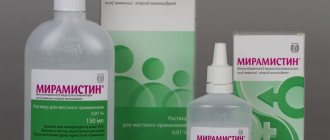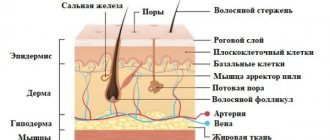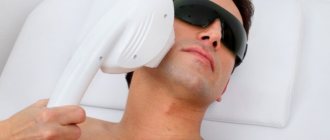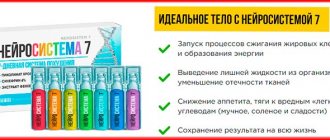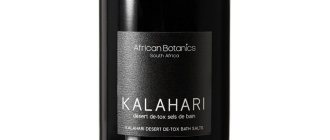Warts are not only an external defect, but also, in some cases, a signal of illness. If this formation is pathological in nature, it should be removed. Today, modern methods have been developed to get rid of unwanted growths. One of the most progressive techniques is the removal of warts with liquid nitrogen, called cryotherapy.
The importance of caring for the growth after the removal procedure, what happens to the wound?
After the nitrogen cauterization procedure, it is necessary to understand the importance of wound care. The skin was seriously damaged. You should follow a number of certain rules, thanks to which you will minimize the occurrence of negative consequences.
Daily care will ensure faster healing of the wound. If you neglect the principles of care after cauterization, the healing process of the wound will proceed much more slowly.
After cauterization, the skin will turn red within a few minutes. The next morning, sometimes some patients develop a blister with fluid inside. The bubble should not be touched; it will go away on its own.
Modern therapeutic methods
The use of folk remedies, although it helps in some cases, is still considered a risky activity. Celandine, for example, is a poisonous plant, so contact of its juice with healthy skin results in burns. If handled incorrectly, you may simply not get the desired effect. Treatment with home remedies is considered undesirable unless an accurate diagnosis is established. What modern clinics offer to get rid of warts:
- Laser removal. The cost of the procedure varies from 300 to 3000 rubles. depending on the volume of work and localization of the build-up. This procedure is painless, effective and safe.
- Cauterization with liquid nitrogen (cryodestruction). The tissue is exposed to low temperatures, which promotes deep freezing and effective destruction of the growth.
- Electrocoagulation. High frequency current is used for treatment after local anesthesia. In this case, a special metal loop with a fine structure is used. With its help, the wart is cut off and the adjacent tissue is coagulated.
In the past, wart removal required a full-blown operation using a scalpel. After such a procedure, unpleasant consequences could arise, scars and scars could form. It took a long time for patients to recover.
Today almost no one resorts to such invasive methods. Paid clinics offer advanced technologies using modern equipment . In what cases is there a question about deletion:
- burning, itching and pain in the area of the wart;
- changes in the size, shape and color of the neoplasm;
- heterogeneous shade of growth;
- an increase in the total number of neoplasms and their appearance in open areas of the body; creating physical discomfort;
- bleeding;
- tear;
- presence on problem areas of the skin where they interfere.
How long does it take for a wound to heal?
On average, final wound healing occurs within one month. During the first week, the skin may peel and become red. If a reddish bubble appears at the site of the wound, this is not a very good sign.
This means that during the procedure, nitrogen touched the blood vessels. Recovery may take a couple of weeks longer than usual. If the bubble is white or pink, then nothing bad has happened.
Combating plantar tumors
Warts on the foot may not bother a person for a long time. Pain occurs when walking when the growths grow deep into the tissue. Most often they are found on the heels, at the base of the toes and their pads.
When removing growths with liquid nitrogen, slight pain may occur, since a certain amount of pressure is required for freezing. The recovery period when treating plantar tumors takes longer. Disability can last up to 3 weeks, as it is unpleasant for a person to step on a painful area of the leg.
Plantar warts also create difficulties due to the need for frequent treatments. They are carried out 3 times every 4 days. In advanced cases, treatment can take up to six months. In order for the treatment to be of high quality, it is necessary to accurately determine the optimal depth of impact . Thanks to a careful approach, it will be possible to avoid the formation of dents and damage to healthy skin.
General rules for wound care, what the consequences may be, what to do when a blister appears?
Rules for caring for a wound after burning off a wart include the following:
- It is necessary to follow all recommendations of the doctor who performed the procedure.
- If you have any questions, contact the institution where the burning procedure was carried out.
- Do not block the access of fresh air to the resulting wound. It cannot be covered with adhesive tape.
- You should not be in the open sun for two weeks. Tanning in a solarium is prohibited.
- Observe basic rules of personal hygiene.
- Try not to touch the wound with your hands to avoid mechanical damage.
- Perhaps using a bit or a gauze bandage. A prerequisite is that there is no strong contact with the wound.
Description of the procedure
Cryodestruction is carried out using an applicator. It is used to apply liquid nitrogen directly to the wart. This leads to freezing of the growth. The doctor holds liquid nitrogen for 30 seconds, pressing lightly on the pathological area. The applicator has the form of a wooden stick with a cotton tip 30 cm long. To carry out the manipulation, a special tank for liquid nitrogen is also required.
When frozen, the formation becomes pale, after which it thickens and turns white. When the manipulation is completed, the wart becomes red and swells. The next day, a bubble with serous contents or blood forms in its place. It dissolves on its own within a week. After 7 days, a crust forms in its place. It comes off on its own, leaving behind a pink spot, after 14 days.
When it is necessary to remove juvenile warts, the doctor performs rotational movements with the applicator parallel to the affected area of the skin. The pressure should be minimal. The effect is carried out until the growth slightly fades. After a couple of minutes, the treatment is repeated. Do this 3-4 times. After 7 days, the treated area becomes dark , after which it begins to peel off. After some time, the neoplasm completely disappears.
Cryodestruction can be used for both children and adults, because it is considered one of the gentlest techniques. To carry out this procedure at home, you can purchase special medications, such as Cryopharma. But it is safer to perform the manipulation under the supervision of a specialist.
How to treat the affected area?
There are several stages of postoperative wound care.
- First, you need to apply an antiseptic, prescribed by your doctor, three times a day. Usually this is an antibacterial ointment Levomekol, which is excellent for wound healing. It must be applied three times a day.
- Secondly, it is recommended to apply oil solutions of vitamins A and E to the skin. They help the skin regain elasticity.
In addition to the external effect of creams and ointments, your body needs to be nourished from the inside. Complex products containing vitamins, minerals, and various microelements will contribute to a rapid recovery.
Indications for mandatory removal
Warts are benign formations, however, in certain situations they can degenerate into a malignant form. Therefore, removal of warts with nitrogen (or another method) must be carried out if:
- the appearance (color, shape, size) of the formation changes;
- due to the peculiarities of its location, the wart is often injured (when shaving, combing) or constantly rubs against clothing;
- in the area where the wart is located, itching, burning, and severe pain are felt;
- the wart bleeds and festeres;
- The number of formations is rapidly increasing.
What is prohibited?
After removing a wart, it is prohibited to:
- Take hot baths and visit the sauna, especially in the first week after the procedure.
- Remove the crust from the wound yourself. This can lead to the addition of another infection and the occurrence of an inflammatory process.
- Apply various cosmetics to the wound. You should not use foundation, concealer, or powder to disguise the wound.
- Contact with any detergents. This will lead to inflammation in the wound area. If the removal took place on the palms, it is imperative to wear rubber gloves when washing dishes.
- Visit the pool and water park. Chlorinated water will irritate the wound.
What is the cost of removing warts with nitrogen?
The price for services for removing warts with liquid nitrogen varies depending on the medical center, the city in which the procedure is performed, the area of the lesion, that is, the size of the wart and their number, the type of tumor, its location - face, fingers, warts on intimate places, plantar education.
If the tumor is no more than 0.5 cm, the price for its removal will be in the range of 150-600 rubles. over 0.5 cm from 350 to 1300 rubles, the larger the wart, the more expensive it is; when treating several elements, clinics offer discounts. You should also choose an experienced, qualified specialist, since the quality of the procedure and the aesthetic appearance of the skin after wound healing depend on this; in case of an overdose or too deep cooling, marks may form on the tissues.
Contraindications for this method of removing formations
Nitrogen wart removal should not be used for the following conditions:
- In case of individual sensitivity to nitrogen
- Epileptic conditions
- With high blood pressure - hypertension
- Angiospasm
- Do not remove warts with nitrogen if there is any irritation or rash around the tumor
- During pregnancy, no wart removal methods should be used.
- During colds, flu, acute respiratory viral infections, acute infectious diseases, inflammatory processes of any internal organs, even with minor malaise and low body temperature, surgery cannot be performed
Possible complications and treatment methods
Unfortunately, after removing a wart with liquid nitrogen, some complications may arise.
What to do if it swells and a blister appears?
After the procedure, a blister may form at the site of the wart. There is no need to worry or panic.
This option is considered the norm. The most important thing is to process it very carefully and not to injure the bubble that appears. It is necessary to treat the area with salicylic alcohol for 7–10 days.
After treatment, you need to smear the area with any moisturizer. It is recommended to carry out this treatment 2 times a day. Opening the bubble yourself is strictly prohibited.
It will open on its own within two weeks. If the blister increases in size and causes significant discomfort, you should consult a doctor. You may need to take a course of antibiotics.
Wound suppuration
This kind of complication is rare. A wound that has not yet healed may experience pain and discharge of pus. If this cannot be avoided, you should definitely consult a doctor. Treating a purulent wound without medical advice can be very dangerous.
In such cases, wound treatment with furatsilin, potassium permanganate or hydrogen peroxide is prescribed. When the wound suppurates, the inflammatory process begins and surgical intervention may be required.
Pros and cons of cryodestruction of keratoma
Cryodestruction is classified as a method that is on the border between therapeutic and surgical treatment. Despite the fact that the doctor does not make incisions or punctures, the treated area dies as a result, so the consequences of cryodestruction are similar to the consequences of invasive treatment.
Removing keratoma with liquid nitrogen has a number of undeniable advantages:
- The procedure is practically painless, since the tissue immediately becomes desensitized upon contact with cold.
- There is no bleeding.
- The number of relapses is negligible - the probability of re-development of keratoma is no more than 2%.
- The cost of the procedure is affordable for the general population.
- There is no need for stitches or bandages.
At the same time, the cryodestruction method also has its disadvantages:
- Keratomas located on the face are not removed with liquid nitrogen, because the likelihood of scar formation is quite high. For the same reason, formations of large diameter are not removed in this way.
- The crust on the treated area takes a long time to form, and its rejection takes longer than when removing the keratoma with a laser or electrocoagulation.
- They try not to use liquid nitrogen to eliminate keratomas located on the bends of the limbs, because in this case the wound heals quite difficult.
- After the procedure, there is no material for histological examination.
- The doctor is not able to control the depth of tissue damage with 100% accuracy. He is guided solely by his own experience, and therefore there is a possibility that the cold will not “capture” all the changed cells or, on the contrary, will affect healthy tissue.
A pigment spot appeared at the site of the growth
If you have sensitive skin, then there is a risk of developing a pigment spot. Pigmentation can also appear if a person does not follow the rules of care and exposes the wound to direct sunlight.
Usually the spots go away within one month. In exceptional cases, it may remain on the skin. But over time, it will gradually lighten and perhaps go away, or remain barely noticeable.
Cryodestruction and laser: what to choose
Today, in addition to cryodestruction, the method of laser removal of keratomas is also widely popular. It is also highly efficient. However, the cost of laser removal is significantly higher. However, like cryodestruction, it does not provide the opportunity to conduct a histological examination of the removed tissue to verify the benign nature of the formation.
The undeniable advantage of the laser is the fact that its impact is more “targeted”, and the treatment area heals faster. At the same time, laser removal has an order of magnitude more contraindications than cryodestruction.
The growth appeared again
It must be remembered that by removing the wart, you have not solved the problem as a whole. After all, if this kind of neoplasm appears on your skin, it means that HPV is present in the body.
To suppress the activity of this virus, complex therapy is necessary, which includes taking antiviral drugs and increasing human immunity.
Important!
You should be attentive to any complications that arise during the postoperative period. It must be remembered that warts can very easily develop into malignant neoplasms. Therefore, be careful and monitor the condition of the wound after removal.
Description of warts
Immunity instability is the main reason for the formation of warts on various parts of the body. They arise due to the penetration of the human papillomavirus (HPV) into the body. If the tumor causes discomfort and is large in size, this is an indication to consult a dermatologist.
If you have a strong immune system, the body reacts appropriately to papillomas and warts. The stronger it is, the less likely the infection is to manifest itself with obvious symptoms. If a malfunction does occur in the body, you can resort to the achievements of modern medicine . There are many methods for removing tumors.
Alternative self-medication
As you know, medicine does not stand still, so in any pharmacy you can find a huge number of different medications that can solve almost any problem. The most popular products for removing warts at home are Wartner Cryo and Cryopharma. They can have the same effect as burning off a wart with nitrogen, but it is still strongly recommended to consult a doctor before using them.
Using the remedy at home, you can make a serious mistake, which will further worsen your situation, and then you will spend even more money on more serious procedures. Therefore, do not take risks and entrust your health to an experienced dermatologist.
Consequences
As with other methods of physical influence, complications may arise after cryodestruction. They develop infrequently, but the possibility of developing undesirable consequences cannot be completely excluded.
Exceeding the force and time of impact on the formation tissue can lead to a burn, and subsequently to the formation of a rough scar. Therefore, you need to be very responsible when choosing a clinic and a doctor. The accuracy of cauterization directly depends on the professionalism and practical experience of the doctor.
Failure to carry out aseptic treatment during the recovery period can lead to another complication - wound infection. Therefore, responsibility for the result lies not only with the doctor, but also with the patient.
